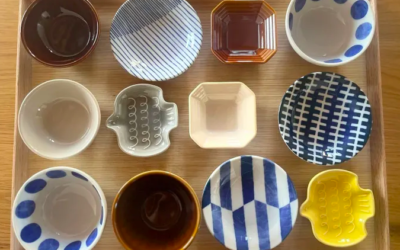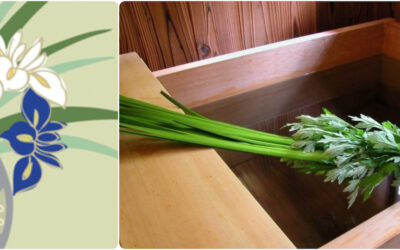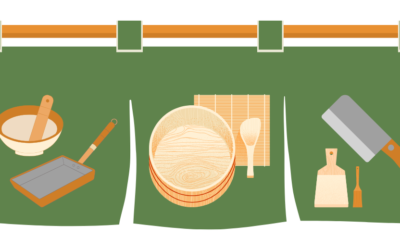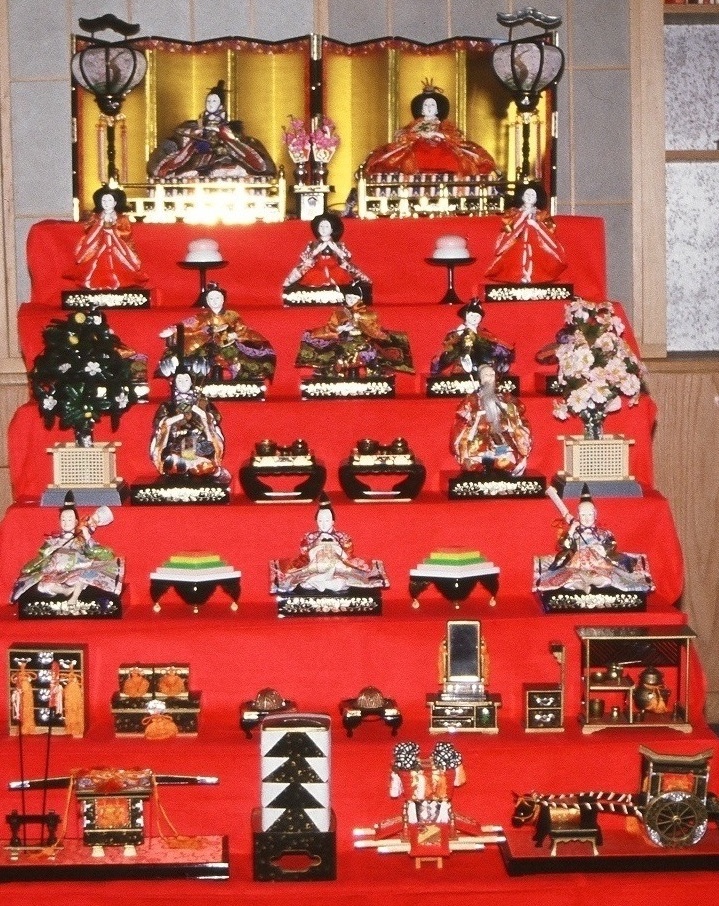
The Andoh Family’s full set of HINA NINGYŌ
Just off camera is a wind-up music box that plays Ureshi Hina Matsuri うれしひな祭り.
Download a chart explaining each of the dolls, and words to the song.
雛祭り
Hina Matsuri
Doll’s Day
For ancient agrarian societies, quirky winter weather – occasional warm days followed by blizzards and icy rain – was more than just an inconvenience or topic of casual conversation. A sudden sleet storm could mean severe crop damage, even failure. Many ancient cultures developed pre-spring farming rites to insure successful autumn harvests. Indeed, the origins in Japan of Hina Matsuri, Doll’s Day Festival, are linked to such a ritual.
The third day of the third month (originally calculated by the lunar calendar) was believed to be the best time to prepare the earth for new life to grow. Farmers and villagers would make simple paper dolls to which they would “attach” their troubles and fears. They would then float the dolls down rivers beginning to swell with melted snow. By the 17th century, dolls made by townspeople were so beautifully crafted, it seemed a shame to let them float away. The thrifty-minded merchants of Edo (the former name for Tokyo) began to save the dolls, displaying them each year in lieu of sending them downstream.
The full set in the feature photo belongs to my daughter, purchased by her Obaachan (Japanese grandmother) just before her 3rd birthday. Assembling (usually in mid-February) and carefully putting away (on the evening of March 3) the set is a once-a-year labor of love — not unlike Christmas trees with their ornaments.
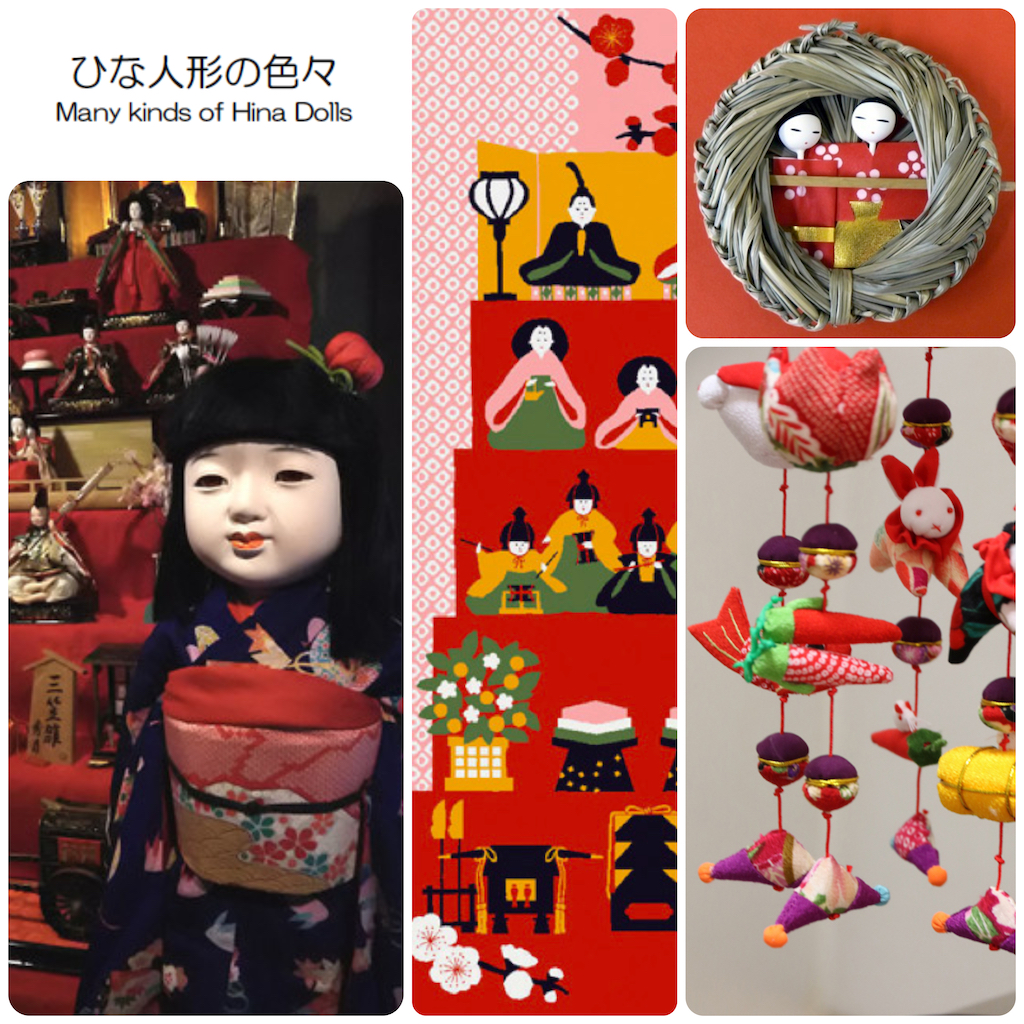
(left) Life-sized Ichimatsu Ningyō 市松人形 are displayed either on their own, or with other types of dolls in the Sanuki region of Shikoku (current-day Kagawa and parts of Eihime and Tokushima Prefectures). Obaachan (originally from Eihime) also gifted our daughter with an Ichimatsu doll.
(center) In many urban homes cramped for space, a tenugui cloth depicting a full set of dolls is hung in a prominent location in lieu of actual dolls.
(upper right) Nagashi-bina 流し雛 (literally, “float-away dolls”) are still set drifting down rivers in many parts of Japan including the Sendai River in Mochigaséchō, Tottori (鳥取県用瀬町千代川), Mitarashi River Shimogamo Shrine Kyoto (京都の下鴨神社、みたらし川), and the river in Iwatsuki Castle Ruins Park in Saitama (埼玉県岩槻城址公園).
(lower right) In some parts of Japan Tsurushi Ningyō (Dangling Dolls) are displayed. Most notable are the dangling dolls of Yamagata Prefecture known as Kasa Fuku (山形県傘福), Sagemon dolls from Fukuoka Prefecture (福岡県さげもん), and dangling displays in Shizuoka Prefecture called Hina no Tsurushi Kazari.

